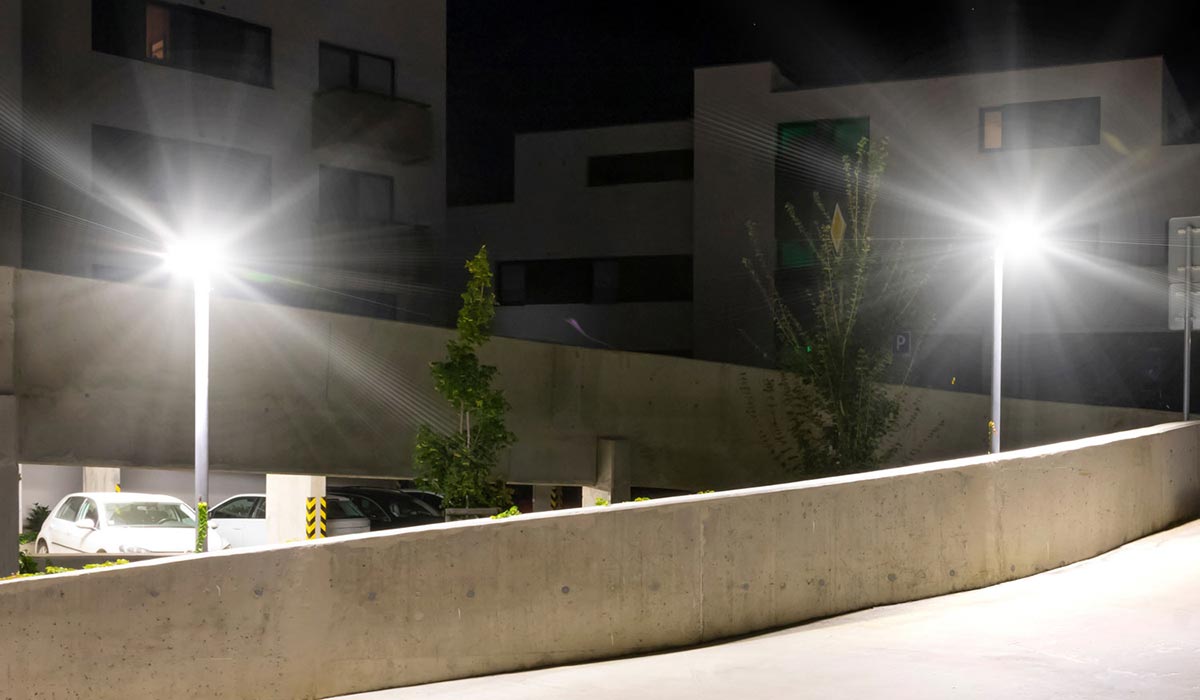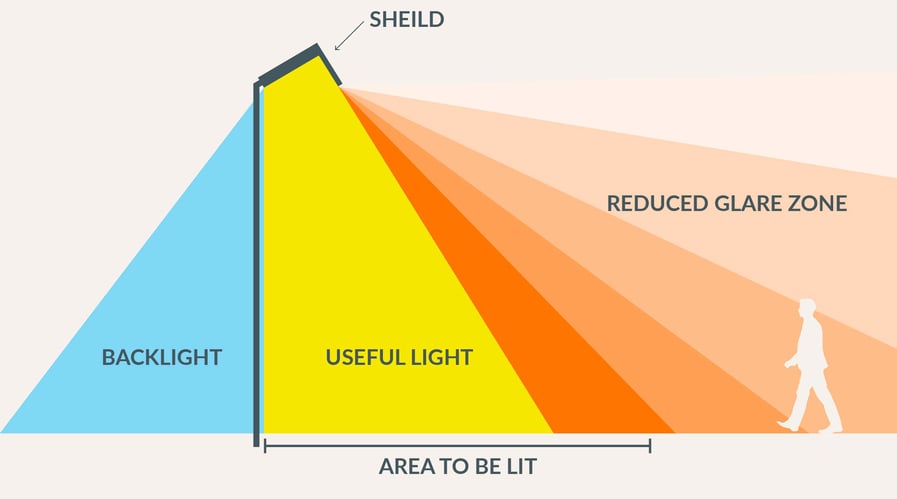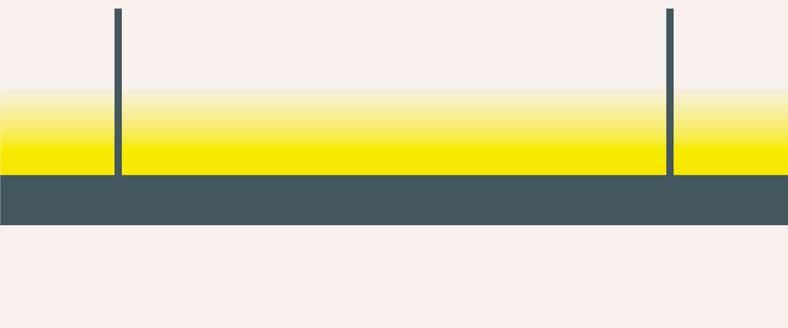Glare is more than a mere inconvenience, it's a visual pollutant with far-reaching implications for health, safety, and overall well-being.
Glare can impair vision, decrease safety, and cause discomfort, making it a critical factor to consider in lighting design. This article aims to demystify the concept of glare and offer actionable insights for reducing it, thereby enhancing the quality of lighting in various settings.
What is Glare?
Glare is an excessive bright light spill that affects an individual's line of sight, causing discomfort or even disability. It can be categorised into two types: Disability Glare, which reduces visibility, and Discomfort Glare, which causes annoyance or pain. The detrimental effects of glare are not just momentary; they can cause accidents and have long-term impacts on people, including headaches, eye strain, and permanent sight difficulties.
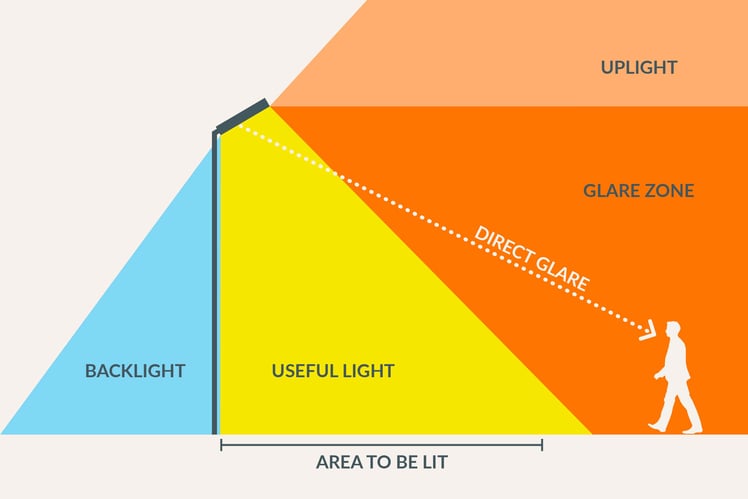
Measuring Glare: The Unified Glare Rating (UGR)
The Unified Glare Rating (UGR) is a quantifiable measure of glare. It considers various factors like background illuminance, light luminance, and the viewer's line of sight. UGR levels range from 10 (minimal glare) to 30 (excruciating glare). In Australia, there are standards that mandate the maximum acceptable glare in certain areas, but many LED lights are not compliant with these standards and can be harmful, to both people (interior lighting) and wildlife (exterior lighting).
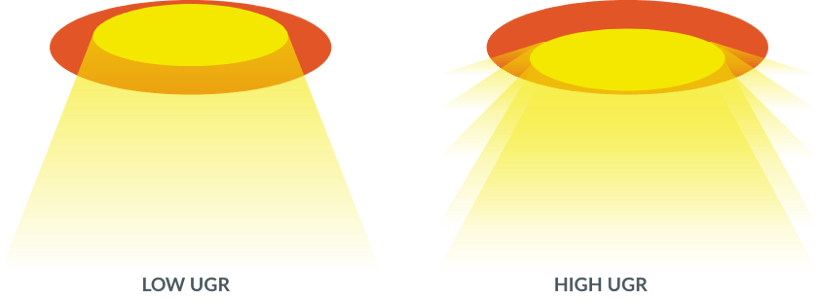
Interior Areas
Offices must have a UGR of no more than 19, as per AS 1680 – Interior and workplace lighting. Unfortunately, the majority of LED panels installed in Australian offices are not compliant and have a UGR of 22 or higher. The best way to achieve low glare is to have a narrow beam angle and special optics. This means the light won’t shine in your eyes unless you are directly below it and looking up.
Exterior Areas
Carparks and outdoor areas are governed by AS 4282 – Control of the obtrusive effects of outdoor lighting. Frequently, LED floodlights are installed that cause glare to neighbouring properties and are not compliant with Australian standards. Good quality LED floodlights have special forward-throw optics so they can point straight down. As well as reducing glare, this also limits wasted light.
Factors Contributing to Glare
- Brightness of the Source: The intensity of the light source.
- Visual Size of the Source: The size of the light source as perceived by the eye.
- Brightness of the Surrounding Field: The brightness level of the area around the light source.
- Position of the Source: Where the light source is located in relation to the viewer.
- Number of Sources: The number of light sources in the viewer's field of vision.
Strategies for Reducing Glare
Light Shielding
One effective method is to incorporate light shielding into the luminaire design, also known as light cutoff. This redirects the light spill to follow the intended lighting distribution, often away from the line of sight.
Indirect Lighting
Using deep-set fitting and indirect lighting to create a well-lit environment can also reduce glare. The larger the pupil diameter, the higher the glare dazzling; hence, a brighter background will cause pupil constriction and lower glare perception.
Angle of Light Source
It is crucial to maintain a minimum of 30 degrees between the visible luminous openings and the line of sight when designing lights. This reduces the chances of glare affecting the viewer.
Are Your Lights Glare-free?
While glare can be a complex issue with multiple contributing factors, through thoughtful luminaire design and strategic lighting placement it is possible to create environments that are not only aesthetically pleasing, but also comfortable and safe for the occupants. Are you aware of the UGR levels in your office or commercial space?
